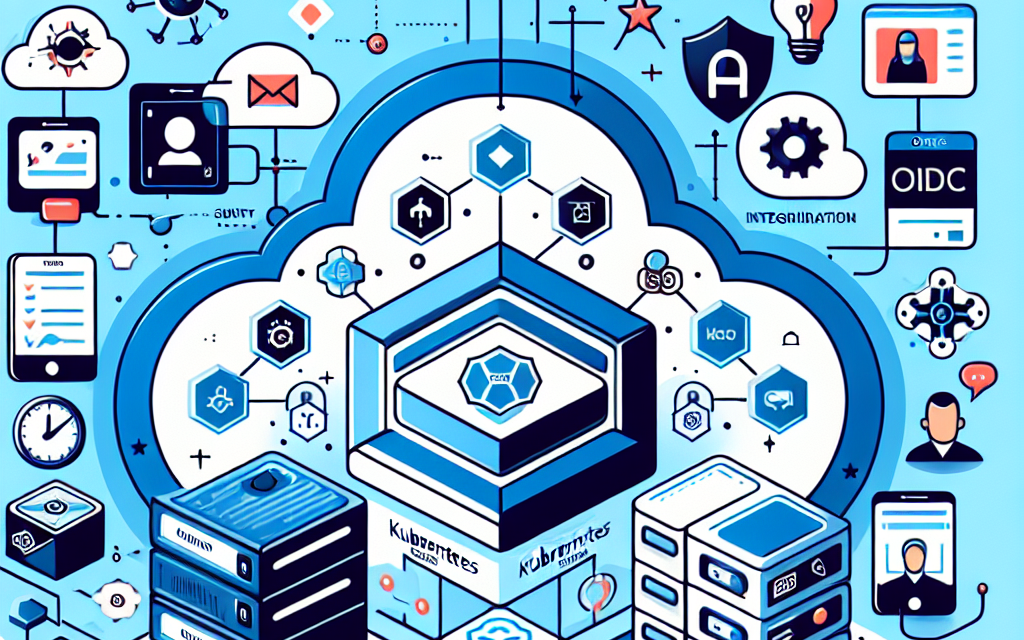As organizations increasingly adopt Kubernetes for deploying and managing containerized applications, ensuring secure access and identity management remains paramount. One of the most effective ways to simplify Kubernetes identity management is through the integration of OpenID Connect (OIDC). This article delves into how OIDC can streamline identity management in Kubernetes environments, making access control more intuitive and secure.
Understanding OIDC and Its Benefits
OpenID Connect is an authentication protocol built on top of the OAuth 2.0 framework. It allows applications to verify users’ identities based on the authentication performed by an Authorization Server. OIDC provides:
-
Single Sign-On (SSO): Users can access multiple applications without repeatedly logging in, enhancing user experience while simplifying password management.
-
Decoupled Authentication: The authentication logic is handled outside of Kubernetes, reducing complexity and allowing teams to manage identity independently.
-
Scalability and Security: OIDC integrates with various authentication providers, allowing organizations to leverage existing identity management solutions while ensuring secure token-based interactions.
How OIDC Works with Kubernetes
Integrating OIDC with Kubernetes involves a few straightforward steps:
-
Choose an OIDC Provider: Popular OIDC providers include Google, Azure AD, and Auth0. Organizations can choose a provider that aligns with their existing infrastructure.
-
Create an OIDC Client: This involves registering your Kubernetes cluster with the OIDC provider. The provider will issue a client ID and client secret, which will be used to authenticate requests.
-
Configure the Kubernetes API Server: You need to configure the Kubernetes API server to use OIDC for authentication. This includes specifying parameters like
--oidc-issuer-url,--oidc-client-id, and--oidc-username-claim. -
Manage RBAC Roles: Role-Based Access Control (RBAC) policies can then be defined based on the claims in the OIDC tokens, granting or denying access to Kubernetes resources based on user roles.
Simplification of Identity Management
1. Centralized User Management
With OIDC, user accounts can be managed centrally within the OIDC provider, reducing administrative overhead. No changes are needed within Kubernetes when new users are added or existing ones are removed—the synchronization happens at the OIDC level.
2. Streamlined Access Control
By leveraging claims in OIDC tokens, access control can be dynamically managed. For instance, attributes like groups or roles assigned to a user can directly map to Kubernetes RBAC policies, allowing for more granular access configurations without additional user management complexity.
3. Improved Audit Trails
Auditability is crucial in any secure environment. OIDC integration enhances auditing capabilities by allowing organizations to log authentication events through their OIDC providers. This provides an additional layer of accountability while keeping Kubernetes operations smooth.
Practical Implementation Example
Imagine a scenario where a development team needs secure access to a Kubernetes cluster. By using an OIDC provider, the team can log in using their existing credentials, and upon successful authentication, they receive a token that grants them defined roles in Kubernetes. The cluster administrator won’t need to manage individual users in Kubernetes or adjust roles every time team members join or leave—a significant burden alleviated.
Challenges and Considerations
While integrating OIDC into Kubernetes simplifies identity management, it’s not without its challenges:
-
Initial Configuration Complexity: Setting up an OIDC provider and configuring Kubernetes can be daunting. Thorough documentation and tutorials are essential to help teams through this setup.
-
Token Lifetimes and Rotation: Organizations need to manage the lifecycle of tokens appropriately, ensuring they are refreshed without service interruptions.
-
Compatibility and Ecosystem: Not all tools in the Kubernetes ecosystem may support OIDC out of the box, necessitating careful selection of tools and processes.
Conclusion
Integrating OIDC with Kubernetes is a game-changer for identity management in containerized environments. By leveraging OIDC, organizations can streamline authentication, enhance security, and simplify access control mechanisms. At WafaTech, we believe that adopting OIDC can lead to more efficient operations and a better developer experience, ultimately paving the way for successful cloud-native application deployments.
As Kubernetes continues to evolve, we encourage organizations to reconsider their identity management strategies and explore the transformative potential of OIDC in building secure, scalable, and user-friendly Kubernetes environments.





